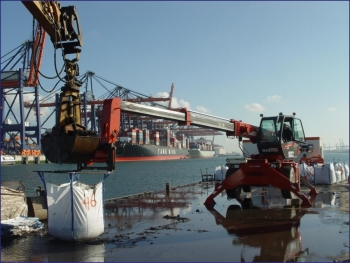Collaboration with Industry
Exploitation of the seabed for commercial purposes comprises a wide range of industrial activities including trawler fishing, oil and gas exploration, laying of pipelines, sand and gravel extraction, and engineering projects such as construction of wind farms, bridges, tunnels and harbours. These activities necessarily involve exploration of the seabed and its subsurface deposits, using both non-destructive techniques of acoustic survey, and disturbance of the seafloor by beam trawlers, drilling and excavation. These activities can cover extensive areas, or involve removal of large volumes of sediment. Although many are inherently destructive, they can reveal as much as they obscure.
Collaborative relationships between industrial developers, archaeologists and government heritage agencies can be of mutual benefit if they are established at an early stage in the planning process. Industrial partners benefit by meeting legal obligations to undertake mitigation studies with the minimum of interference to their planning schedules, and by the development of good public relations and a reputation for sustainable management of seabed resources. Archaeologists benefit by gaining information that would otherwise be unavailable and by access to technological and financial assistance.
SPLASHCOS members have been involved in a number of collaborative ventures, and Working Group 4 has focused on collating examples of good practice and promoting good relations through the production of a guidance booklet Marine Industry and Submerged Prehistoric Archaeology, and organization of an open conference Offshore Industry and Archaeology: a Creative Relationship with industry representatives, members of heritage agencies, archaeologists and geoscientists at Esbjerg in March 2013, the results of which will be published.









